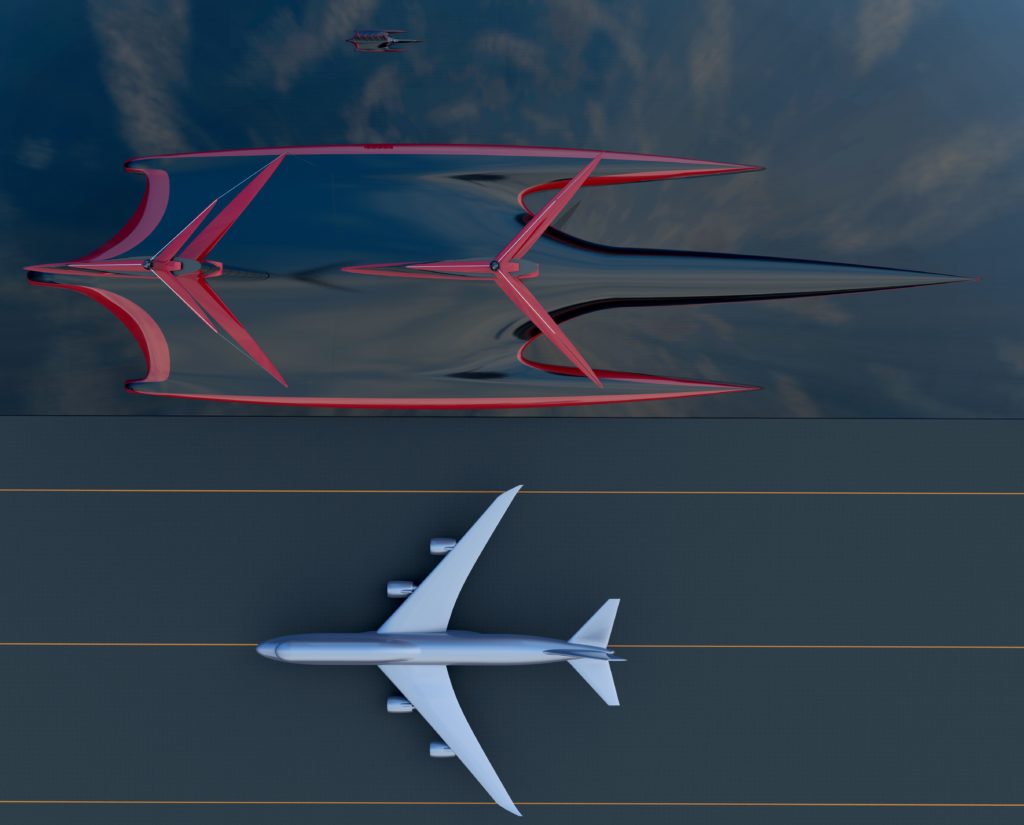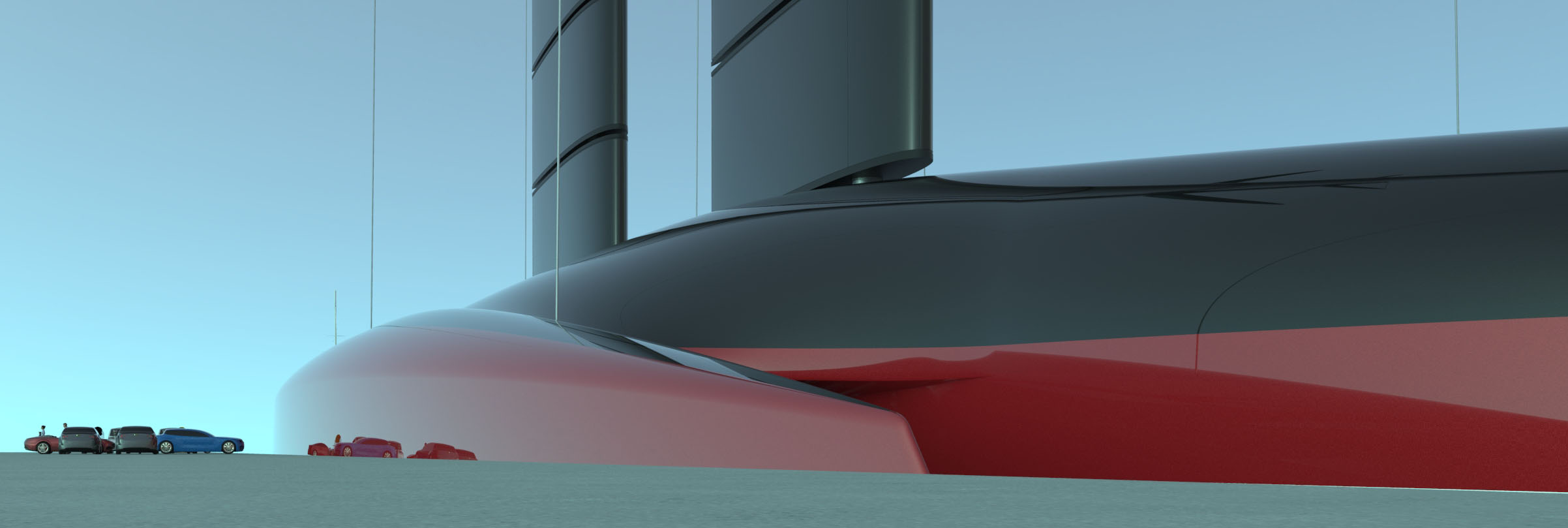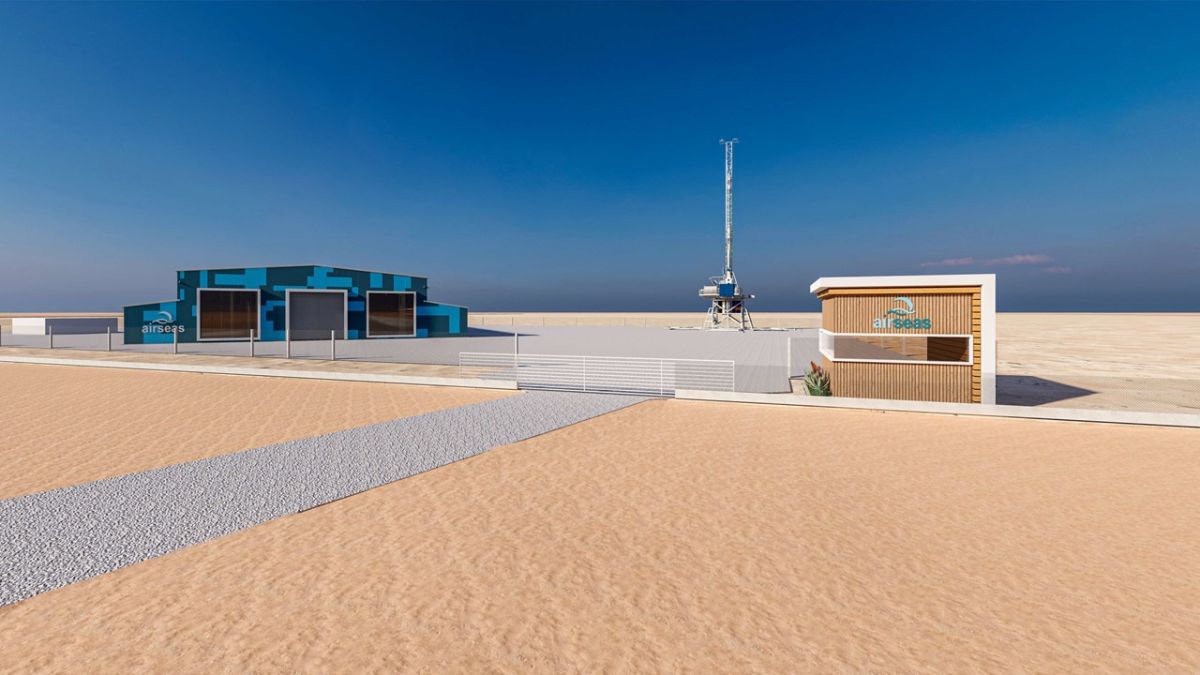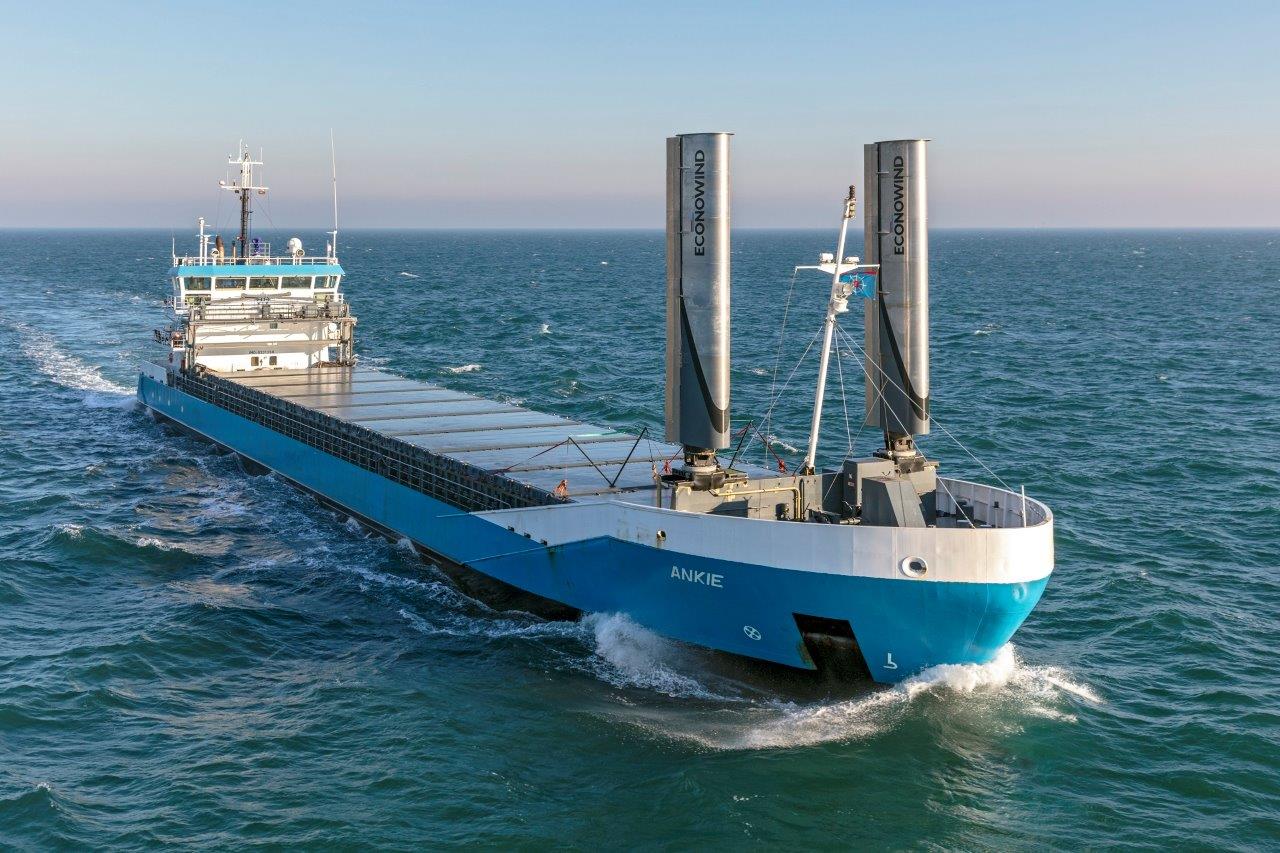Brian Boserup has something to smile about, but the smile is not the biggest one he wants to have on his face. Boserup has a crazy idea, one that others have been knocked down for, and one that he has seen criticised before, but one whose time could well be right.
The shipping industry is waking up to the huge challenge of how decarbonise. But it is also waking up to the fact that there is now money pouring into wind propulsion research. Well, it is pouring in compared to the levels that were being spent on the idea of wind propulsion 10 years ago.
So now the ideas of Brian Boserup in Denmark no longer quite as crazy as it seems. He wants to build a giant trimaran with a series of wingsails that can replace some existing vessels in the current global trade pattern.
Boserup’s smile is big because he has finally finished getting the details together for his joint industry proposal, aiming to get a demonstration vessel built in a couple of years.
His Blue Technology company in Copenhagen received initial funding from the Danish Maritime Fund, itself backed by the financial group Dankmarks Skibskredit (Danish Ship Finance). He has used the funds to build up a complete package for a vessel design that he says will be of interest to cargo owners, shipowners, ports and other bodies as the industry collectively looks for the idea solutions to decarbonise.
He now has the JIP proposal ready and has begin talks with businesses to help fund the next stage of his dream.

Moving from idea to reality
The concept package that Brian Boserup has developed mirrors somewhat some of those beginning to emerge in other projects around the world, perhaps an indication of its potential merits.
It is a system-based approach where there is no one simple power source propelling the ship. The sails, or huge wingsails, are the main propulsion force, but the vessel will also have energy storage along with fuel cell, and electrolyser to allow hydrogen production.
The efficiency of the wingsails is potentially so great in some situations that it can be used to turn a propulsor/propeller which is used to generate electricity. The electricity is stored in energy storage units or used to power an electrolyser that can generate hydrogen, which can be stored and then used in a fuel cell to power the propeller when it is needed (such as port manoeuvring or when there is less than adequate wind).
But then why the trimaran design? Boserup points to two things. One is the ability to have a shallow draft (a bonus for some ports) and the other is that a wide beam will of course help with stability when dealing with the tall wingsails that will come with sail tip forces due to the wind force..
But Boserup knows he will have to overcome a lot of challenges before this idea sees any commercial light of day, not least in the intensive development and concept work and convincing backers and industry businesses.
The JIP he has now drawn up to attract interest across the industry will help with a 1:10 scale model he says, after that there will be the development of the full-scale solution. His first design is a car carrier (PCC) design that will have about 2000 cars, so the comparisons with the Wallenius Marine concept that the Swedish company is currently working on is worth noting.
Both designs have tall wingsails though the Wallenius Marine vessel is a monohulled design, albeit wider than a standard PCC today.
Mind the gap
Boserup has been working on this project for a number of years now, and is adamant that he has the right solution at the right time. He is keen to make shipping in general aware that it can think fully outside the box and look for new ways to facilitate global trade while moving to an absolute carbon zero pathway.

But one design for one ship by 2030 is a long way from moving all ships towards that goal. To achieve that, the industry needs to look at replacing a vast amount of existing tonnage with completely new ideas. These are ideas that have not only not been tested fully to ensure marinisation, but nor have they been trialled to see how they interact or impact other parts of the maritime and global transport chain.
How will ports, port services, bunker suppliers, technology firms and other actors need to respond to the changing shape of the maritime asset? How will crew be trained to sail them?
But while these questions need to be answered, the 2050 goal is being seen as a drive to accept those outside-the-box ideas that were just considered too crazy a decade ago. Brian Boserup’s idea may seem radical and futuristic, but these ideas, and many more like them, are needed as we continue to transform this industry. We need this transformation to happen with a full awareness of how it will impact all sectors and industries.

































